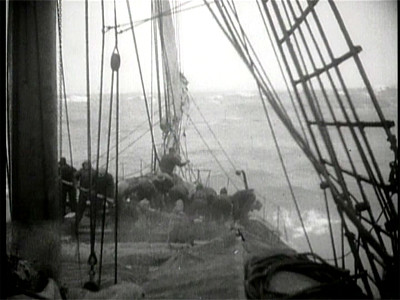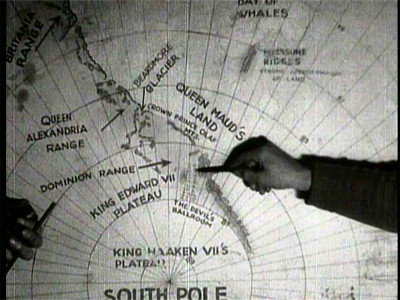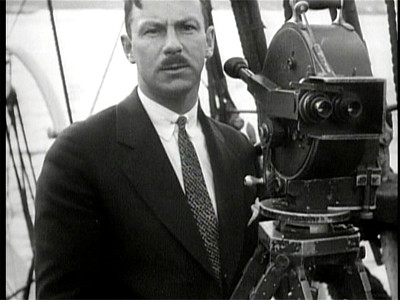WON: Best Cinematography (Joseph T. Rucker, Willard Van der Veer)

The first World War was over, and it was an exciting time in America. The modern age was quickly coming upon Us. We were quickly conquering the skies and the seas, and it wouldn't be too long before every stretch of Earth would be explored. Fortunately, film had been created the very last moments of the exploration age, when guys who traveled great distances were considered national heroes.
Rear Admiral Richard E. Byrd was one such hero, and With Byrd at the South Pole chronicles his 1928 expedition to the South Pole, with the goal to be the first man ever to fly an airplane over the very pole itself. Byrd, who claimed to have flown over the North Pole and who was one of the first people to fly a plane from New York to France nonstop, was quickly becoming one of the most famous explorers of the 20th century. He was considered very brave and patriotic.
He was not, however, a very good actor.

The film opens with a near-five minute scene of Byrd introducing the film. He's clearly uncomfortable, and we can't help but laugh as we watch his eyes move as he reads from cue cards.
Fortunately, the rest of the film fairs better, but overall it's an odd and slight docudrama that's valuable as a historical document then an actual movie. It's main problem is an overall lack of focus, switching between moods and goals rather quickly. At times, the film is a dramatic adventure...

...is a picturesque look at an alien landscape...

...is a technical documentary examining all the small details...

...is a naked guy in a bucket...

This is largely the work of the editor, though. The thing the film won an Academy Award for, cinematography, is really very good. Two cameramen went along with the expedition, and even got to be characters in the film. Willard Van der Veer...

And Joseph T. Rucker.

Between the two, they produced a lot of great, dramatic footage of the Antarctic landscape and managed to great down and personal with the small details at the same time, and a lot of these shots, like ones high in the sails of the ships used to get to the South Pole or shots along the edges of icy cliffs, appear to have been downright life threaten to have taken.
It's impossible to figure out who shot what, so for all we know, all the dangerous stuff could have been the work of one of them and the other could have been a total puss, but however it worked out, you can't help but appreciate the work that went into it.
That brings up an interesting question: Why don't more documentaries get cinematography nominations? Surely, most documentaries depend on having the best damn cinematography possible.
Maybe the Academy is just, I don't know, stupid.

No comments:
Post a Comment